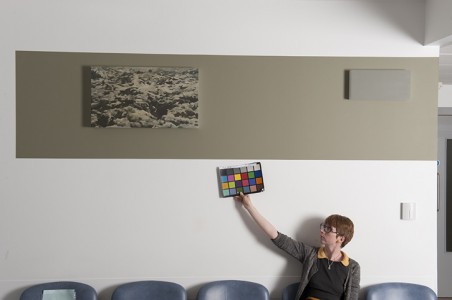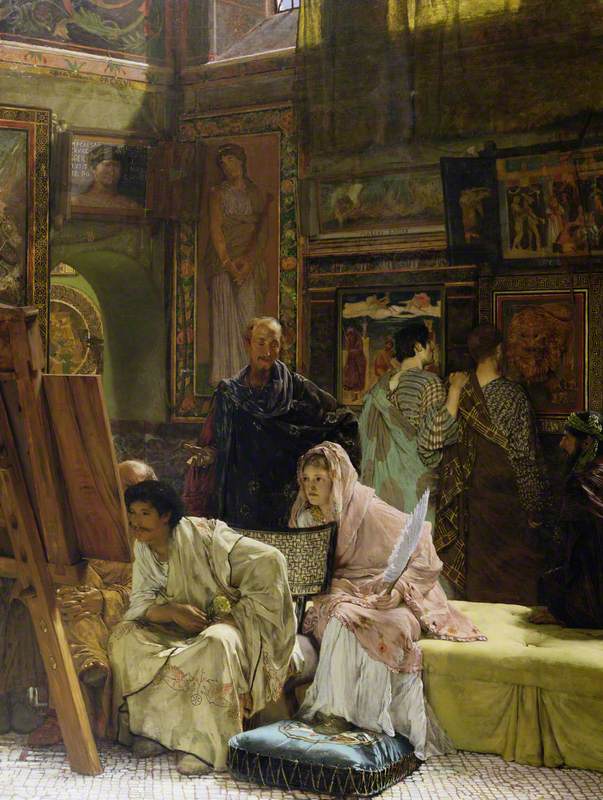As Art UK’s oil painting project progressed, many regional coordinators discovered that seeing the back of a painting was not only useful but revealing. ‘When we were working with collections that were not previously catalogued or numbered’, said Coordinator Pam Wooliscroft, ‘it seemed that I spent most of my life sitting on a floor holding a painting, squinting at the back for a number and detail. This is often a complete contrast to what people think a job working with fine art entails.’
Generally only dust and numbers, a ticket with the painting details or exhibition stickers are found on the backs of paintings. However, sometimes there was more to discover. Occasionally there was an additional painting on the reverse. If this was the case we photographed both sides – recto (front) and verso (back).
Coordinator Julia Abel Smith found a painting on the back of a Samuel Butler at St John’s College, University of Cambridge. As might be expected, most oil paintings in the Colleges and University of Cambridge are portraits of masters, fellows, other alumni or subjects with a college theme. The Butler collection is an exception. A college alumnus, better known as a writer, he presented a substantial number of his works to St John’s in the first part of the twentieth century. Many of these paintings show scenes in Italy, where he sketched quickly and often directly onto board. On the reverse of his painting Calonico, Julia discovered another picture, Rossura.
Over the years we were cataloguing oil paintings, we came across various scribblings, newspaper clippings and wax seals on the backs of paintings. At the Beverley Art Gallery, in East Riding of Yorkshire, there are several paintings with small snippets of information pasted to the reverse.
One of these is Portrait of a Man by artist James Neal, who wrote on the back of his 1940 painting:
'The sitter was the model for King Cophetua & the Beggar Maid, painted in 1884 by Burne-Jones, which now hangs at the Tate Gallery, I believe the model’s surname was Mancini… I have since worked out that the model was born in 1859, Burne-Jones finished the painting in 1884, making the model 25 years of age. He was 81 years of age when I painted him in 1940.'
I find it interesting that Neal is not actually sure of the name of his sitter. Perhaps he was one of many artists painting this man who never actually spoke to him.
Hazel Buchan Cameron, Former Art UK Paintings Project Coordinator















